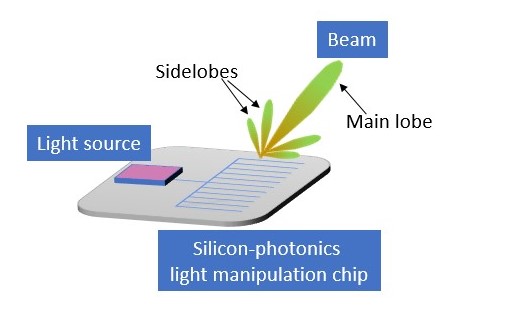MSc thesis project proposal
Sparse Nonuniform Optical Phased Array Design
Together with cameras and radar, lidar is considered one of the critical sensors to realize autonomous driving. The state-of-the-art lidars rely on mechanical components to steer the optical beams, which makes them bulky, costly, and prone to vibrations. However, due to recent development in integrated photonics, light can now be manipulated on-chip at an acceptable cost, bringing us closer to a single-chip, fully-integrated lidar system. An essential challenge of this concept is the design of an optical phased array (OPA) that forms the radiated light field, a low-divergence laser beam for lidars. An OPA consists of a light distribution network, phase-shifters, and optical antennas used to steer the direction of light waves by controlling their phase and amplitude. The design of OPA balances the tradeoff between the number of optical antennas, antenna spacing, power consumption, and performance.
Assignment
In this MSc project, you will develop and analyze signal processing algorithms for an efficient sparse nonuniform OPA design. The design optimizes the performance metrics such as the sidelobe power levels and the beamwidth, using a minimal optical on-chip infrastructure. The project will be jointly supervised by Jac Romme and Geethu Joseph and done at TU Delft or IMEC/Holst Centre, Eindhoven.
Requirements
We are looking for a self-motivated master's student in electrical engineering or any related study for this project. Specifically, the student should have a background in signal processing, optimization, and programming skills in Matlab, Python, and/or C/C++. Strong communication (written and verbal) skills in English are mandatory. The expected project duration is about 9 to 12 months.
Contact
dr.ir. Jac Romme
Signal Processing Systems Group
Department of Microelectronics
Last modified: 2024-03-04
